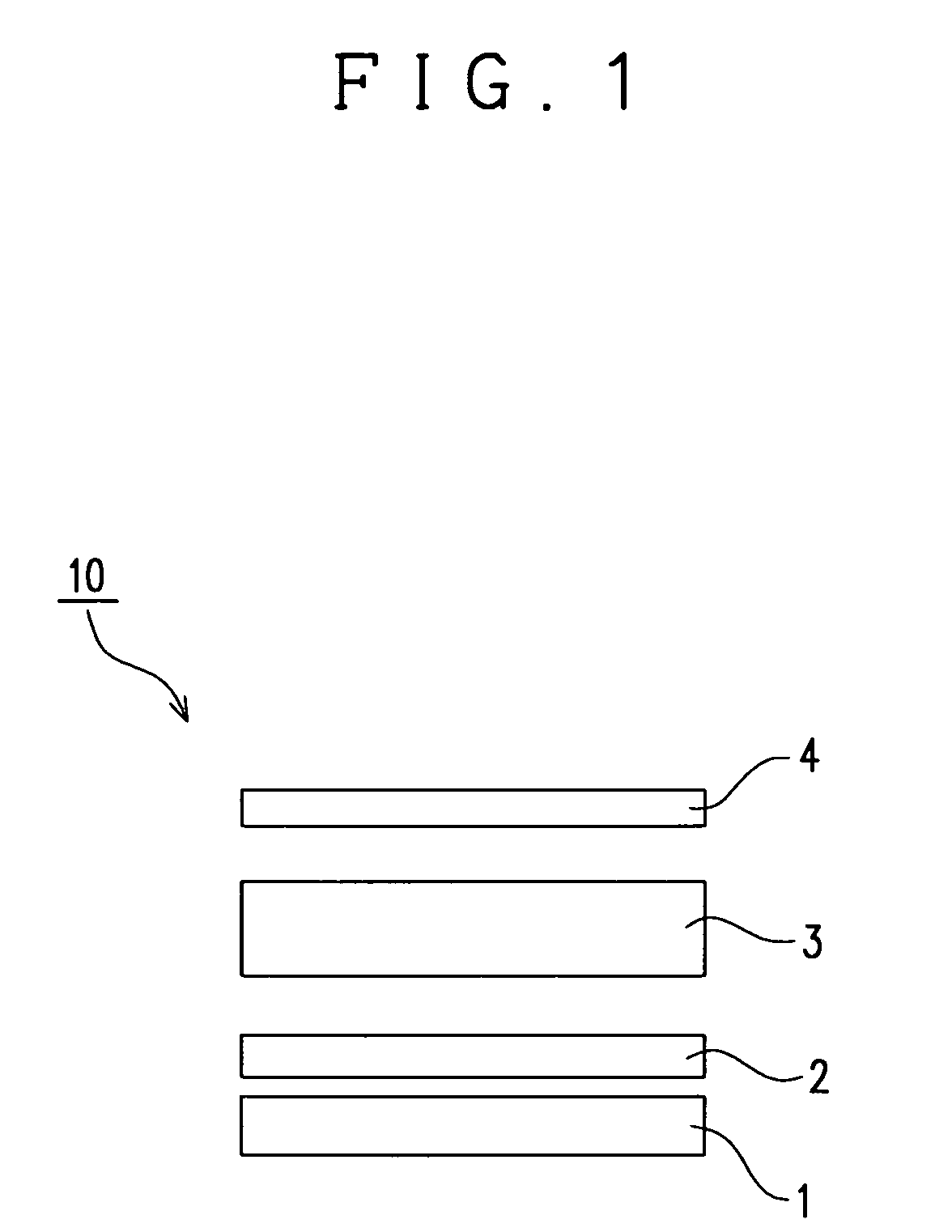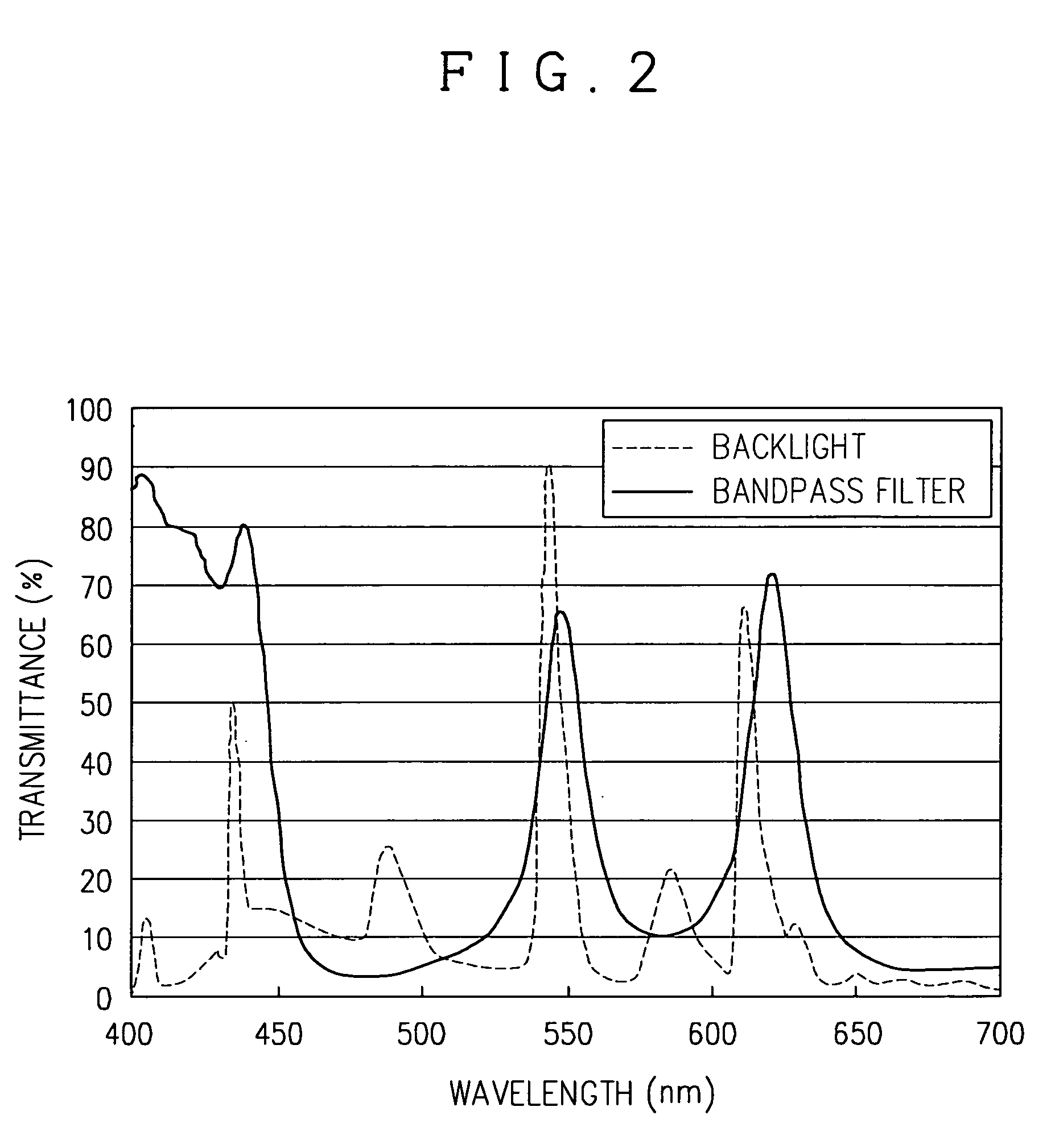Liquid crystal display unit
- Summary
- Abstract
- Description
- Claims
- Application Information
AI Technical Summary
Benefits of technology
Problems solved by technology
Method used
Image
Examples
examples
[0079] Examples and Comparative Examples as presented will make the characteristics of the present invention more clear.
example 1
[0080] Fifteen layers of vapor-deposited thin films of TiO2 / SiO2, respectively having thickness as designed in Table 1, were laminated on a substrate of a polyethylene terephthalate film having a thickness of 50 μm (a total thickness: about 53 μm) to prepare a bandpass filter having the transmission spectral characteristics, as illustrated in FIG. 2.
TABLE 1FILMTHICKNESSLAYERMATERIAL[nm]15TiO292.114SiO2130.113TiO268.312SiO297.211TiO263.210SiO288.29TiO2152.18SiO292.87TiO270.76SiO250.35TiO2148.64SiO295.83TiO265.52SiO296.91TiO265.3SUBSTRATE
[0081] With the diffusing plate mounted on an optical transmission member of a conventional non-directional backlight (the emission spectrum of a cold cathode light source used is shown in FIG. 2) and the bandpass filter mounted thereon, it has been found that the light transmitted through the bandpass filter is collimated to about ±20° relative to the front.
[0082] The optical system was incorporated into a TFT liquid crystal panel having viewing a...
example 2
[0084] A fluorinated acrylate resin (LR202B manufactured by Nissan Chemical Industrials, Ltd.) as a low refractive index material, and an acrylate resin with ultrafine particles of a high refractive index inorganic material embedded therein (DeSolite manufactured by JSR Corporation) as a high refractive index resin were respectively used. A total of twenty-one layers of them having designed thicknesses shown in Table 2 were laminated on a substrate (TAC film (TD-TAC)) manufactured by Fuji Photo Film Co., Ltd.) by multilayer thin film deposition so as to prepare a bandpass filter having the transmission spectral characteristics, as illustrated in FIG. 4. In other words, a sol-gel film (nd=1.4) as a low refractive index resin and a hard coat resin (nd=1.7) with ZrO2 super fine particles embedded therein as a high refractive index resin were respectively used. They were laminated on a TAC film as a substrate having a thickness of 80 μm by multilayer thin film deposition. The bandpass f...
PUM
 Login to View More
Login to View More Abstract
Description
Claims
Application Information
 Login to View More
Login to View More - R&D Engineer
- R&D Manager
- IP Professional
- Industry Leading Data Capabilities
- Powerful AI technology
- Patent DNA Extraction
Browse by: Latest US Patents, China's latest patents, Technical Efficacy Thesaurus, Application Domain, Technology Topic, Popular Technical Reports.
© 2024 PatSnap. All rights reserved.Legal|Privacy policy|Modern Slavery Act Transparency Statement|Sitemap|About US| Contact US: help@patsnap.com










